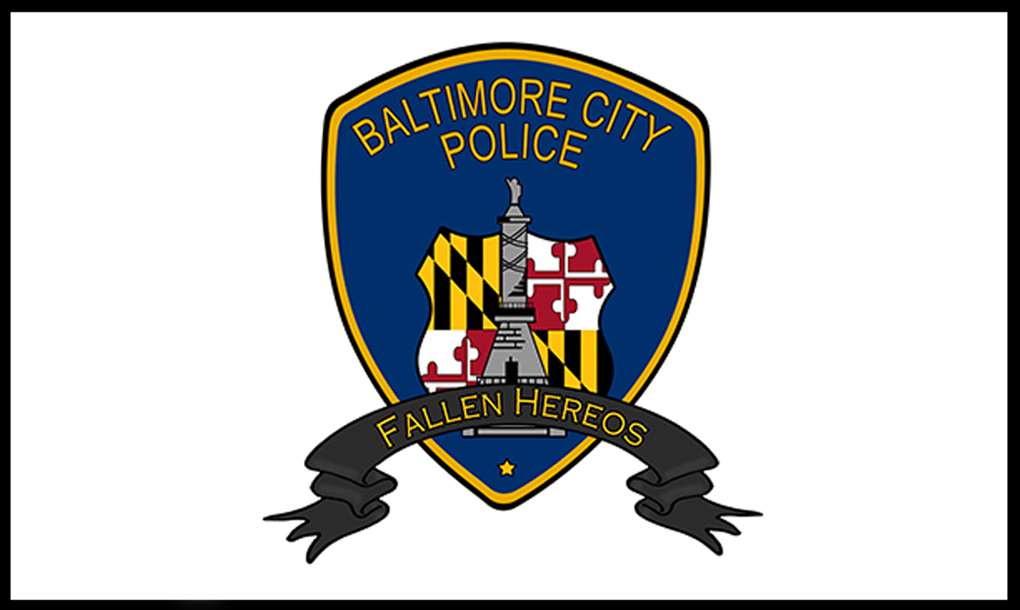On this day in Baltimore Police History 1946, we lost our Brother Police officer, Elmer A. Noon, to a heart attack based on the following: Officer Noon was 41 years old and died of a heart attack shortly after returning home from work. Elizabeth-Ann used to wait for her dad to get home to tell her how his day went; this was normally achieved by his telling her a police war story, that he would always tone down for her four-year-old ears. On this day, however, as he came into the house, he was visibly ill, not wanting their daughter to see him this way patrolman Noon’s wife Elizabeth bypassed the evening ritual with Elizabeth-Ann and took her husband straight in to bed, then went and called immediately for medical attention By the time The Doctor arrived, Officer Noon had died. The Doctor had determined that the cause of death was a massive heart attack.
His commanders and wife were confused by the cause of death because he had always appeared to be in such good shape and had not exhibited any of the warning signs or physical symptoms related to heart attack. The Doctor mentioned the possibility that “great physical exertion” by even a healthy man could sometimes result in a heart attack.
Investigators would focus their attention on his last several calls for service before leaving. They quickly honed in on one call he handled at 10 minutes to four, when Officer Noon and his partner, Patrolman Otto Leyhe, 23, responded to the intersection of Gay and Forrest Streets, outside of the Belair Market, to help a Special Police Officer, Officer Fred Thomas who was attempting to subdue a Disorderly Drunk. The Drunk Albert Thomas Rogers, on top of being intoxicated, was large, and he was strong. Citizens stood by watching as the much larger Rogers tossed the Special Police Officer around like a rag doll. As Officer Noon and Leyhe pulled up on scene, Officer Noon could see the security officer in need of assistance, so before their patrol car could come to a complete stop, Officer Noon had leapt from the passenger seat to the street and joined in the fight. Patrolman Leyhe had not made it to the tussling officer’s before he saw all Rogers toss Officer Noon aside. It was like two warriors fighting a giant, and the giant was winning, but the warriors were not giving up.
Officer Noon was thrown with such force that he didn’t touch the ground until his body was slammed onto the side of their police vehicle. Stunned but not unconscious, Officer Noon got up and shook it off. Showing no fear, he went right back in after Rogers; this time he removed a device from his belt called an “Iron Call.” For those that don’t know, “The Iron Claw” was a mix of the older “Come Along” (a choke chain device used to latch onto a suspect's wrist) and the more modern “Police handcuff.”. When Officer Noon latched this device onto Roger’s wrist, the fight was not completely over, but it was more controlled by the police than by Rogers. Not long after this (Officer Leyhe estimated it to be 5 to 10 minutes), another officer, patrolman William Ervine, arrived and helped subdue Rogers. It took four officers to control the violent drunk and get him into the patrol wagon. The wagon driven by patrolman Hue Law, Patrolman Law, would take Rogers to the Northeastern Station House for booking. Due to his combative actions, an officer would have to ride in the wagon with him. Being the second man in a two-man car, Officer Noon was elected for the ride to keep Rogers from escaping or assaulting anyone else. The entire trip from the scene to the station house, to the cell block, and to the holding cell was one continuous battle. Still, Officer Noon declined to charge Roger’s with anything other than his initial act of being drunk and disorderly. We’ll never know if this was out of compassion for a drunk that didn’t know fully what he was doing or his being anxious to get home to Elizabeth-Ann and tell her about this, one of his more action-packed war stories.
Members of his family waited anxiously for the outcome of the investigation into his death. They are concerned for their daughter, sister, Aunt Elisabeth, granddaughter, niece and cousin Elisabeth-Ann. Because without the determination that it had occurred in the line of duty and the modest financial benefit that that decision would permit, Elizabeth faced the difficult time of raising their daughter on her own. Fortunately, on January 7, 1947, Raymond Newman was able to pen a letter to the commissioner, Hamilton R. Atkinson, praising the department’s decision to consider his brother’s death in the line of duty. In it, he wrote, “The decision rendered is a credit to the department and proves that the men in charge have the interests of those under them at heart.”
Officer Noon was 41 years old when he died of a heart attack shortly after returning home from work. Just before Officer Noon’s shift ended, he went to the assistance of a Special Police Officer in the Belair Market. A man assaulted both officers, and two more would arrive as back-up. The suspect’s violent resistance caused Officer Noon to be thrown against the side of his radio car, resulting in his eventual heart attack. Officer Noon died two hours after this altercation; he was married and had a four-year-old daughter, It was on this day 1946 (a Wednesday, November 20)
As his brothers and sisters of the Baltimore Police Department, we will not let him be forgotten, His service Honored the City of Baltimore and the Baltimore Police Department may he rest in peace, and may God bless him.






















